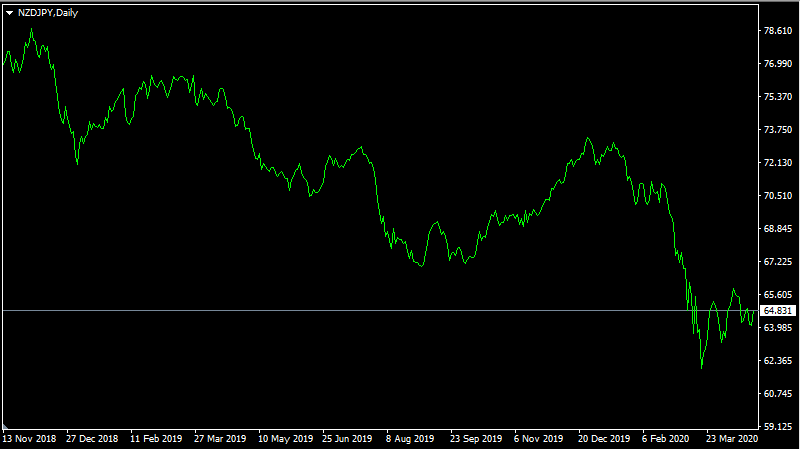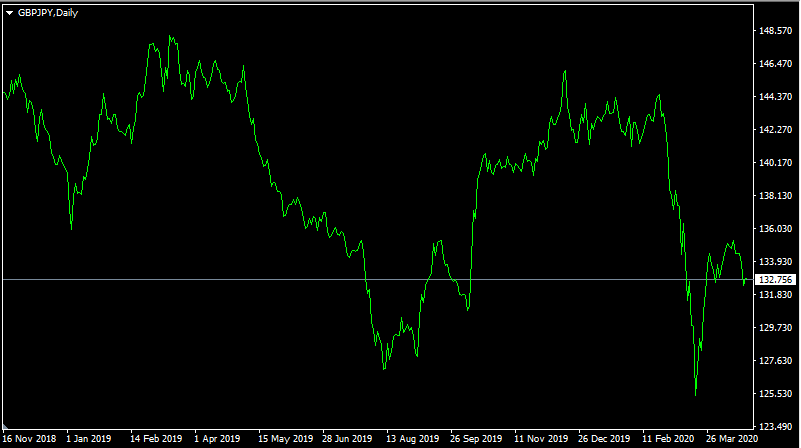Trading With and Without Leverage
Many experienced professional traders, as well as financial commentators, describe leverage as a ‘double-edged sword’. The reason behind this is that the leverage essentially has two sides of the same coin: It gives a trader an opportunity to trade with large amounts of money with smaller deposits and potentially earn high returns. However, on the other hand, just like it increases potential payouts, it can also magnify losses and even in some cases wipe out the entire trading account.
To illustrate this in more detail, let us take a look at this table:

We can make several observations from this table:
- Such small daily changes in the exchange rates as 0.2% can have a massive impact on high leveraged trades, but with those accounts which have no or very low leverage, there is very little noticeable difference.
- Even if a trader uses 50:1, such a degree of fluctuation can lead to a 10% loss of the amount invested, if the market moves in the other direction.
- With 500:1 leverage, there is a risk that the entire trading account funds can be wiped out.
It might be also useful to point out that the 0.2% change in currency exchange rates can happen in a matter of minutes. During the major economic announcements or other important events, market volatility can be even higher.
Some traders might decide to trade without leverage in Forex, however, this approach is not highly profitable. Yes, the risks are much lower when you do not use any leverage, but the rewards are also decreased. In investing, risks and rewards are positively correlated, meaning, the higher the risks, the higher potential for rewards.
Alternative High-Yielding Savings Account
Obviously, not everyone can afford to put such large amounts of capital in the trading accounts. Even some of them who can, they might prefer to invest some of it in the Real Estate, Stock market, or other investments.
At the same time, the interest rates across the developed countries are at or very close to zero percent. So there might be many people who do not have the time or desire to trade Forex for a living, but they just want to earn a higher return on their savings, than on 0.1% or even 1% on their deposits.
Even if a trader manages to achieve a 0.75% return per month, that is a solid 9% return per year, far better than any savings account. On the other hand, they might not want to take too much risk with their hard-earned money, so no leverage trading for Forex traders can be one solution to this problem. Obviously, nobody can give a 100% guarantee of success, however, this can be significantly less risky than using 1:10 or 1:50 leverage.
To illustrate this, let us take a look at this NZD/JPY daily chart:

As we can see from the above, during the last few months the New Zealand dollar/Japanese Yen pair is engaged in a long term downward trend. However, the price action itself does not resemble a straight line. There were at least 3 bounces before the trend resumed. So let us suppose that some traders who were using a no-leverage Forex trading method have decided to analyze the latest NZD/JPY charts and trade this pair at some point.
Suppose that they have decided to open a short NZD/JPY position at 72 level. As we can see, after reaching this point, the pair had a short-lived recovery, when it reached the 76 mark. This represents approximately 5.6% appreciation of the New Zealand dollar. Now, even if traders used relatively modest 1:20 leverage, depending on available funds in some cases their entire position could have been wiped out or at least suffered significant losses.
However, since they are using a no-leverage trading method in Forex, this change would have only led to a 5.6% loss, but the point here is that traders are not forced to close down their positions. By judging the situation, they can either cut their losses or wait for a reversal.
So if they have chosen a second option and held this position until now, then they could close this trade at near 64 level, earning a payout worth more than 11% of the sum invested in this position.
This obviously does not imply that the no-leverage trading in Forex will always guarantee to win trades, however, it can certainly give more flexibility and breathing space to traders.
Affordable Forex Training
There are also plenty of beginner traders who want to sharpen their trading skills and get more experience, without risking losing significant amounts. Clearly, there are many demo accounts available and for some people, this can help them to achieve those goals.
Yet, still for many market participants, the experience gained by trading with real money is much more valuable. This requires coping with stress, a high degree of discipline, and attention. Something which is completely missing from demo accounts, where a trader can make some of the worst mistakes without any consequence and even reset the virtual money balance as much as he or she wants it.
This is a situation where no-leverage trading might be beneficial for Forex traders. For example, after training on demo accounts, a beginner can take the second step and open a trading account with a $1,000 deposit and set a leverage level at 1:1. Obviously, the potential payouts here can be small, but this is not the most important point here. The main aim is to gather experience without heavy losses, even if most trades go wrong. This method essentially lets the trader survive the market volatility.
In order to get a better sense of this argument, let us take a look at this GBP/JPY daily chart:

As we can see from the above, the GBP/JPY pair has been very volatile lately. Such fluctuations can create many good trading opportunities. However, unlike in the previous example, where the market participants guess the direction of a trend correctly, now let us suppose that the conclusions have eventually been proven wrong.
The story goes like this: after analyzing the charts in January 2020, traders have concluded that after a long downtrend, the GBP/JPY had a reversal in August 2019 and now entered the uptrend. Therefore, let us suppose that they have opened long GBP/JPY at 142 level, without using leverage. We can all see from this chart what happened next: the Pound fell dramatically to near the 126 mark and later recovered some of its losses, eventually settling to near the 133 level.
So if traders decide to cut their losses and close this position, they will lose approximately 6.4% of the amount invested in this trade. Now, this might not sound like a very successful outcome, however, it is much better than losing 100% of the funds in case of 1:20, 1:50, or 1:100 leverage.
As we can see from this example, by using this strategy, a trader can protect his or her accounts from massive losses and at the same time gather more experience.
Pros of Trading Without Leverage:
There are several pros for trading without the leverage.
Lower risk expose
Trading without leverage of any kind with only your money exposes traders to much lower risks. The risk of losing more than the initial investment is no longer present as the trader is not using borrowed funds from the broker. Diminishing risks means lower chances of experiencing large losses. Traders can withstand market fluctuations without fear of wiping their entire account with just one bad trade, like in many cases when trading with higher leverages.
Higher margin calls and stop-out levels
Since there is no borrowed money involved in trading, no leverage eliminates margin calls and stop-outs as the trader is only trading with their money. However, if the balance is approaching zero, margin calls and stop-outs may still happen.
Learning opportunities
Since the risks are reduced, no leverage trading will allow traders to trade with flower emotional burden and learn more about practical trading.
Cons of Trading Without Leverage:
Limited profit potential
Leverage is a double-edged sword that allows traders to amplify potential losses and profits many folds. No leverage means the profits are not amplified.
Capital intensive
Trading without leverage requires considerably more trading capital than trading with high leverage.
Reduced trading opportunities and less flexibility
Since no leverage requires larger capital from traders to operate, it forces them to only pick the best trading setups. This reduces trading opportunities and is not as flexible as using high leverages.